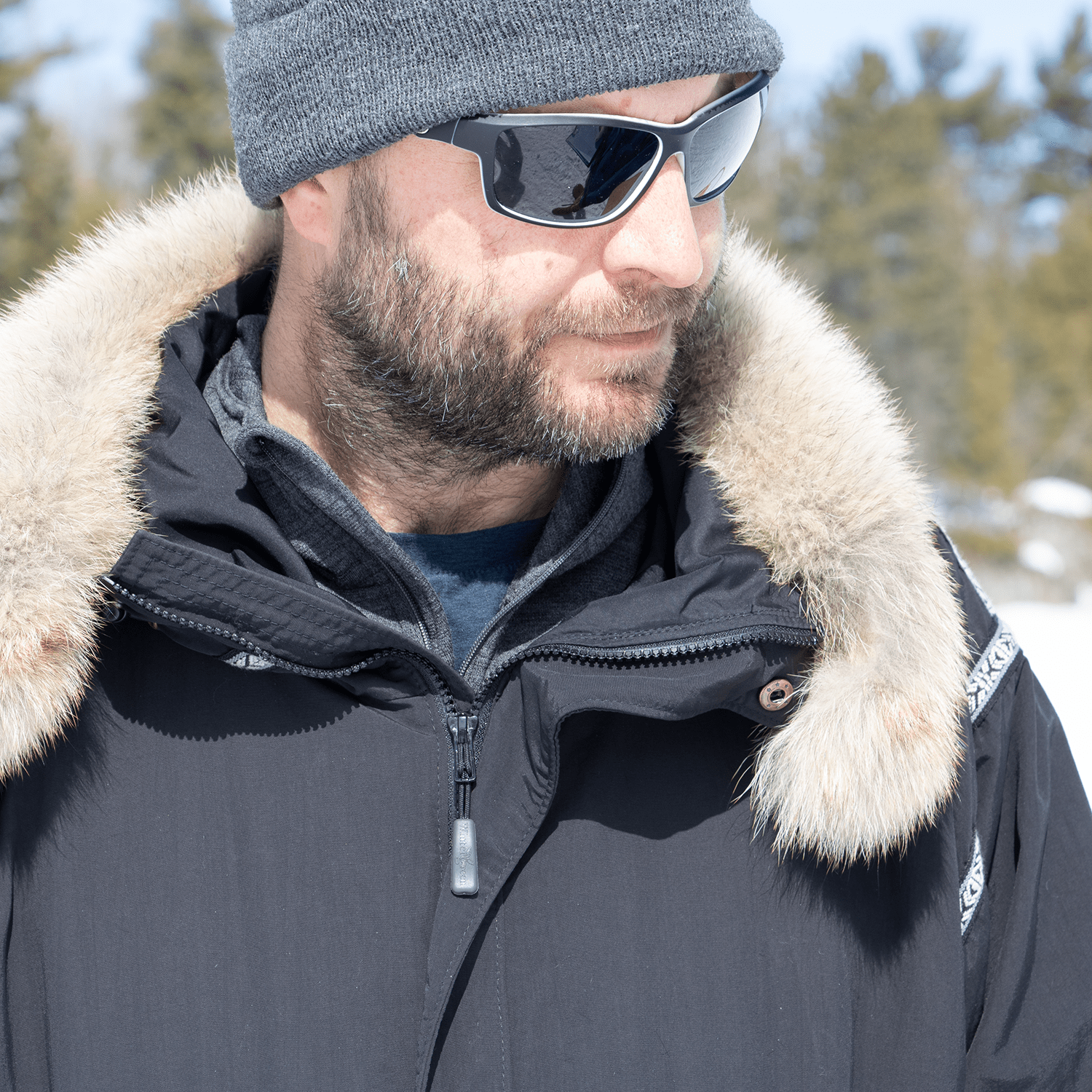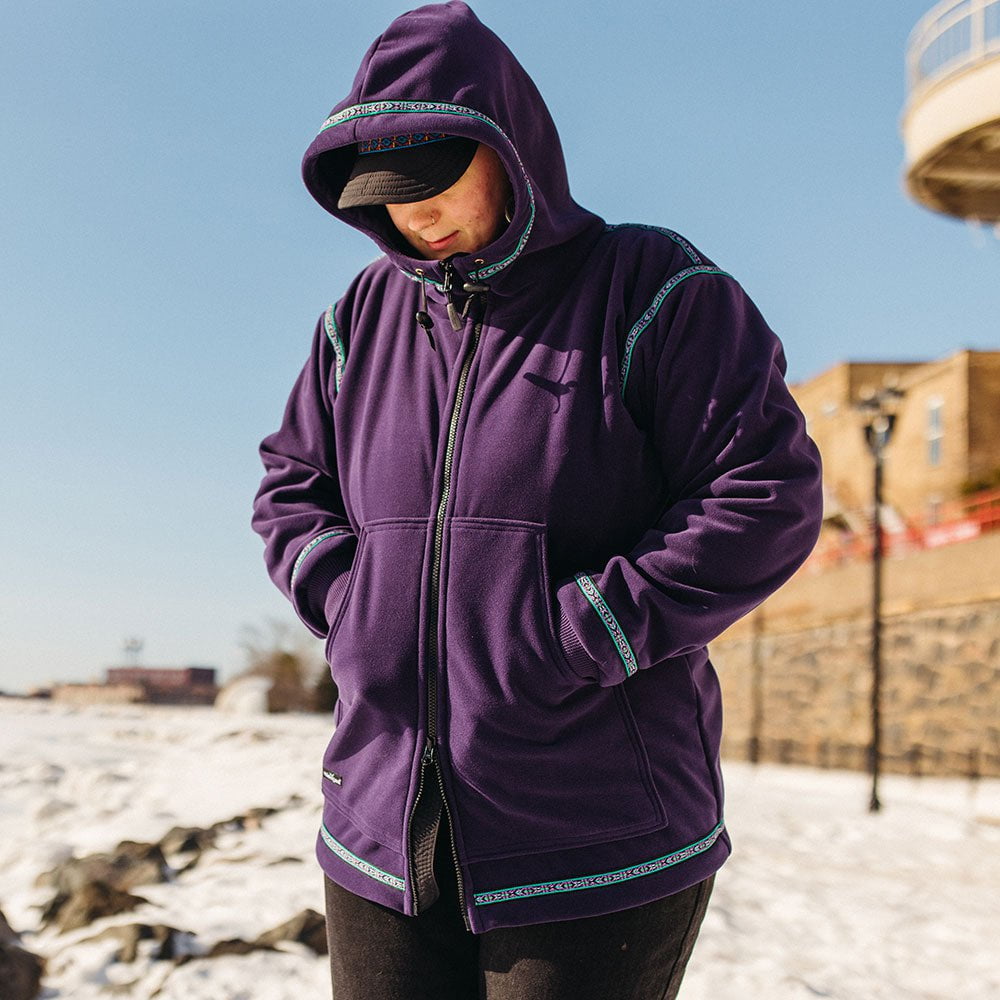When shopping for outdoor gear, you’ve probably seen “cold tolerance ratings” on sleeping bags and even some jackets. A tidy number like “-20°F” looks reassuring. But when it comes to clothing, the equation is more complex. At Wintergreen Northern Wear, we choose not to assign cold ratings to our garments. Instead, we build versatile layers so you can tune warmth to your body, your activity, and the conditions around you.
Why Cold Ratings Don’t Translate to Clothing
Cold ratings make sense for sleeping bags because they’re static systems: you crawl in, zip up, and lie still. Under those controlled conditions, standardized testing works. Clothing, on the other hand, is dynamic. It moves with you, breathes with you, and performs differently depending on countless factors.
Assigning a single number to a jacket or pair of pants doesn’t capture those variables. That’s why we prefer to explain our approach and provide a layering system that adapts to you.
What Actually Determines Comfort Outside
Comfort in the cold depends on more than the thermometer. Key factors include:
-
Outside temperature & wind: Wind chill accelerates heat loss, while humidity can make damp cold feel harsher. As we say in the midwest, "It's the wind that'll getcha."
-
Your activity level: Skiing uphill generates far more heat than standing on a frozen lake.
-
Your metabolism: Some people “run hot,” others “run cold.” Studies show men generate ~23% more body heat than women of equal size when standing still.
-
Layering choices: Wool, fleece, polyester, and shell fabrics all insulate differently. Thicker or thinner layers dramatically change heat retention.
-
Moisture management: Wet layers (from sweat or snow) chill the body much faster than dry ones.
Two people wearing the same gear in the same conditions can have completely different experiences. That’s why flexibility is key.
The Wintergreen System: Modular Layering
Rather than using cold ratings, we provide building blocks. Our philosophy is simple: mix and match base layers, midlayers, and outer shells to fine-tune comfort without over- or under-heating.
-
Base Layer: Start with a wicking base to pull sweat away. Wool or synthetic works best.
-
Midlayer: Add fleece or wool insulation. Options like our fleece jackets provide warmth without bulk.
-
Outer shell: Top it with a breathable anorak or shell pants to block wind and snow.
-
Add-ons: Running cold? Throw on a vest or heavier fleece top. Running warm? Peel a layer and keep moving.
It’s not about a single rating—it’s about adjusting in real time to your needs.
Real Example: Same Gear, Different Needs
During one of our internal field tests, two team members wore identical Wintergreen systems in -10°F weather. One person was perfectly comfortable; the other added a vest because they naturally run colder. Both were right. Both were prepared. That’s the beauty of layering.
How to Test and Tune Your Setup
-
Start mild: Begin with fewer layers on the move to avoid sweating out.
-
Add when you stop: Layer up quickly when resting or standing still.
-
Pay attention to wind: A windproof shell can make all the difference when gusts pick up.
-
Experiment locally: Test your system on day trips before big expeditions so you know how your body responds.
Tested from Pole to Pole
Our garments may not carry a number, but they have been proven everywhere from Antarctic expeditions to Arctic dogsled trips, and countless Minnesota winters in between. Guides, explorers, and everyday adventurers rely on layering with Wintergreen because it works in the real world.
Insulation Holds Heat—It Doesn’t Make Heat
A key reminder: insulation doesn’t generate warmth. Your body does. Clothing only holds in the heat you produce. That’s why layering, activity, and personal metabolism all matter more than any arbitrary rating on a tag.
FAQ: Cold Tolerance Ratings
Q: Why don’t you rate your garments for cold tolerance?
A: Because too many variables—body type, activity, wind, humidity, and layering—all affect warmth. A single rating would oversimplify.
Q: What should I wear at -10°F if I run cold?
A: Start with a base, add a fleece midlayer, and top with an anorak. If you still feel chilly, add a vest or thicker top for targeted warmth.
Q: What’s the best base/midlayer combo under an anorak?
A: A wool or synthetic base paired with a fleece midlayer works in most conditions. Adjust thickness based on activity.
Q: Wind vs. moisture—what matters more?
A: Both matter. Wind strips heat fast, while moisture (sweat or snow) chills the body. A breathable, windproof shell manages both.
Q: Do men and women feel cold differently?
A: Yes. Men typically generate more body heat at rest. Women often benefit from an extra insulating layer.
Q: Has Wintergreen gear been tested in extreme cold?
A: Absolutely. Our clothing has been used on expeditions across both poles and countless wilderness treks.
At Wintergreen, we believe in providing the tools, not the numbers. By focusing on layering, quality materials, and proven field testing, our garments adapt to you—wherever your adventures take you.



